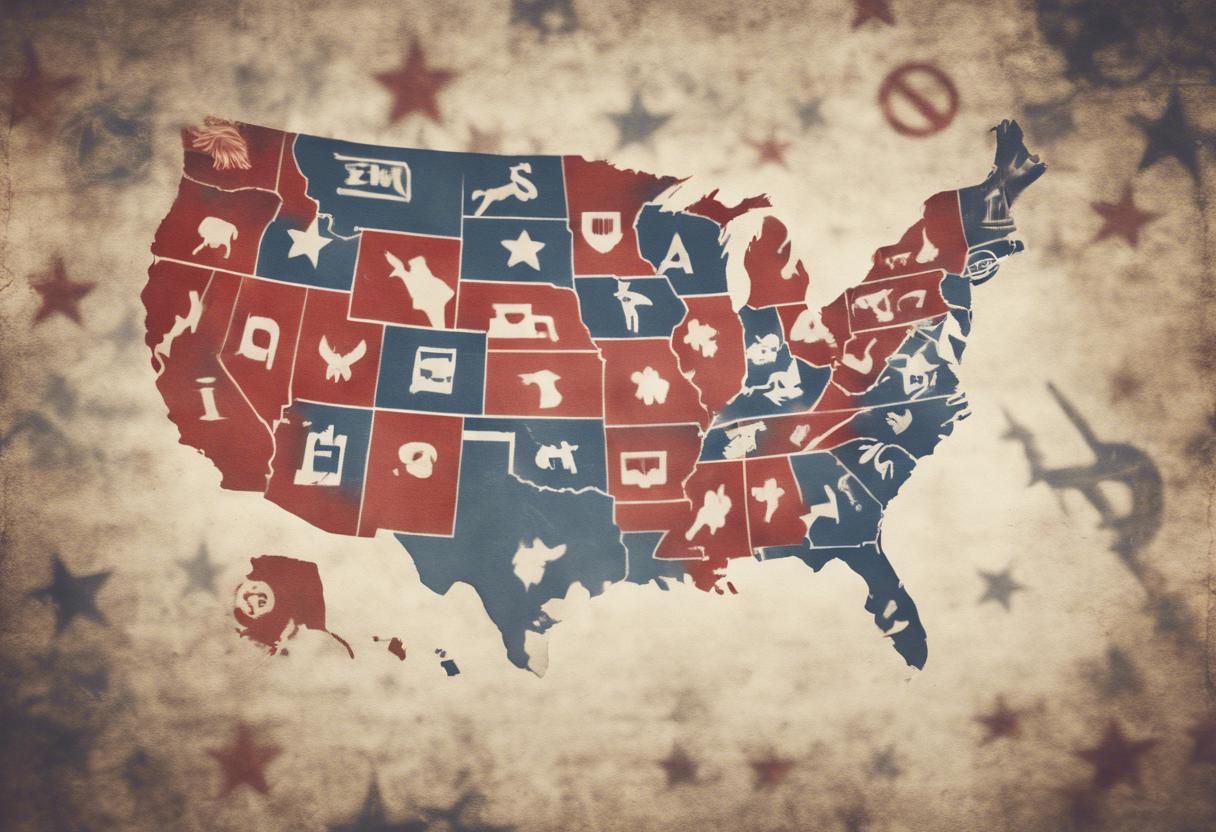The presidential debate, aired on television, has concluded. So, what comes after? Kamala Harris and Donald Trump are both set for an intense seven-week campaign trail, with multiple planned visits to seven swing states, all in an effort to gain favour with a small but significant voter demographic that could alter the course of the election.
Why is there so much emphasis on these particular states?
The political landscape of the US, as depicted on the electoral map, displays distinct partisan lines, separating the Red (Republican) stronghold in the heartland from the Blue (Democratic) territories, predominantly on the coasts and in major cities. Donald Trump’s surprising victory in 2016 was a result of his success in flipping key states that had previously been considered safe bets for Hillary Clinton’s campaign, including the ‘Rust Belt’ states: Pennsylvania, Wisconsin, and Michigan. On the other hand, Joe Biden’s slim victories in Pennsylvania (1.17 per cent) and Georgia played a critical role in defeating Trump four years later.
Could you explain how the American electoral system functions?
For a candidate to be proclaimed victorious, they must garner a total of 270 electoral college votes, with every state carrying a specific number of these votes. Given that certain states are consistently either red or blue, part of the excitement and complexity on election night lies in discerning the ‘pathways’ a candidate must traverse to achieve this critical number.
Which state is crucial for Kamala Harris?
She will need to set her sights on the very state where she took part in the debate against Donald Trump: Pennsylvania. There was significant conjecture surrounding her initial pivotal decision of choosing a vice-presidential candidate. Many thought she would opt for Josh Shapiro, a politician with good prospects in the Democratic party and, as Pennsylvania’s governor, a potential advantage for her in this crucial state. However, she instead selected Governor Tim Walz of Minnesota.
And which state will be crucial for Donald Trump?
In mid-July, electoral assessments were so favourable for the Republican contender that his campaign team brazenly referred to a potential ‘landslide’ victory in a magazine article, a statement that could potentially comeback to bite them. However, this confidence was based on the assumption that he would be running against Joe Biden. The unforeseen candidacy of Kamala Harris has sent a shockwave through Republican strongholds.
Labelled as a “purple” state due to its propensity for narrow vote margins, North Carolina has seen a Democratic president emerge victorious only twice since 1964. However, Trump’s advantage in this state is no longer evident, suggesting that without securing the state and its 16 electoral votes, his prospects of entering the White House might be challenging.
As for the most unpredictable state? This distinction was held by Georgia four years prior, where Biden secured victory with only 11,000 votes in his favour amidst a population of 3.7 million. Such a razor-thin victory prompted persistent allegations from Trump concerning election fraud, resulting in a multitude of legal charges related to election interference.
With another election looming, it’s predicted that the margins will be just as close as before. The outcome remains uncertain until post-election, marking the beginning of possibly intriguing events.

